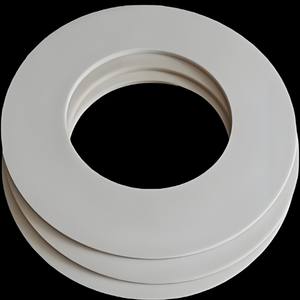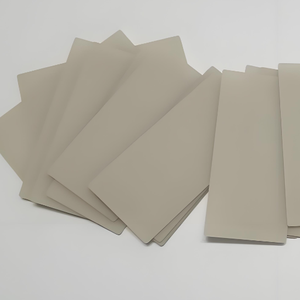Discover Premium Ceramic Products | Durability & Elegance United | Advanced Ceramics
PRODUCT PARAMETERS
Description
Overview of aluminum nitride ceramics
Aluminum Nitride Ceramic is an advanced ceramic material with aluminum nitride as the main component. It has been widely used in electronics, optics, and mechanics due to its unique properties.
Features of aluminum nitride ceramics
High thermal conductivity: Aluminum nitride ceramics have relatively high thermal conductivity, usually between 170-260 W/m·K, which makes it an excellent heat dissipation material. It is especially suitable for electronic devices that require efficient heat dissipation, such as substrate materials for power semiconductor devices.
Good electrical insulation: Despite its high thermal conductivity, aluminum nitride ceramics are excellent insulators of electricity, which can effectively prevent current leakage and ensure the safe operation of electronic components.
Low dielectric constant and dielectric loss: These characteristics make aluminum nitride ceramics very suitable for use in high-frequency circuits because it can reduce energy loss during signal transmission.
High temperature resistance: Aluminum nitride ceramics can maintain structural stability and strength at extremely high temperatures. Its melting point is about 2800°C, so it is suitable for applications in high temperature environments.
Low thermal expansion coefficient: Compared with semiconductor materials such as silicon, aluminum nitride has a lower thermal expansion coefficient, which means it has better dimensional stability when the temperature changes, which helps improve packaging reliability.
Corrosion resistance: Aluminum nitride ceramics have good chemical stability to most molten metals and are not easily oxidized or corroded, allowing them to perform well in harsh environments.
High mechanical strength: Although not as hard as some other types of ceramic materials, aluminum nitride ceramics still provide enough mechanical strength to allow them to be used in many structural applications.
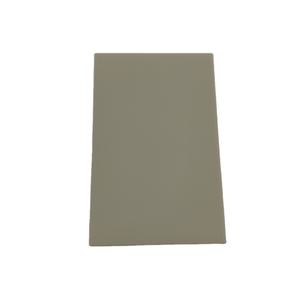
(0.5/ 0.635/ 0.1mm Thickness ALN Ceramic Plate Alumina Nitride Ceramic Substrate)
Specifications of 0.5/ 0.635/ 0.1mm Thickness ALN Ceramic Plate Alumina Nitride Ceramic Substrate
The 0.5 mm, 0.635 mm, and 0.1 mm density ALN ceramic plates are precision-engineered alumina nitride substratums designed for high-performance applications. These plates combine thermal monitoring, electric insulation, and mechanical stability to meet demanding commercial demands. The product properties stay constant across all density options, making sure dependability in varied settings.
The 0.5 mm ALN ceramic plate balances flexibility and architectural toughness. It supplies a thermal conductivity of 170-180 W/m · K, successfully dissipating warm in small electronic systems. Its dielectric stamina exceeds 15 kV/mm, supplying robust electric insulation. The 0.635 mm version boosts mechanical toughness without compromising thermal performance. It suits applications calling for greater load-bearing capacity, such as power components or LED heat sinks. The 0.1 mm ultra-thin variation enables light-weight assimilation in microelectronics, keeping a thermal conductivity of 160-170 W/m · K.
All density options feature a smooth surface area coating (Ra ≤ 0.2 μm), suitable for thin-film deposition or circuit printing. The alumina nitride product stands up to deterioration from acids, alkalis, and high-temperature oxidation as much as 1400 ° C. The coefficient of thermal expansion (4.5 ppm/K) carefully matches silicon, lowering stress in semiconductor product packaging.
These ceramic plates sustain laser cutting, exploration, and metallization procedures. They work with gold, silver, or copper finishes for boosted electric connection. The 0.5 mm and 0.635 mm plates display flexural staminas over 300 MPa, making certain crack resistance under mechanical stress and anxiety. The 0.1 mm plate, while thinner, keeps adequate rigidness for dealing with during assembly.
Applications consist of RF/microwave tools, vehicle sensors, laser diodes, and aerospace parts. The safe, halogen-free composition meets RoHS and REACH requirements. Custom-made sizes and shapes are offered upon demand. Storage space recommendations include keeping home plates in a completely dry, room-temperature environment to avoid dampness absorption.
Evaluating protocols confirm monotony ( ± 0.1 mm/m ²), dimensional precision ( ± 0.02 mm), and thermal shock resistance (1000 cycles, -55 ° C to 850 ° C). The ALN ceramic plates are packaged in anti-static materials to stop surface area contamination during shipping.
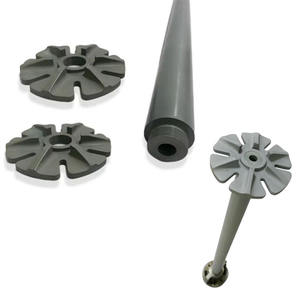
(0.5/ 0.635/ 0.1mm Thickness ALN Ceramic Plate Alumina Nitride Ceramic Substrate)
Applications of 0.5/ 0.635/ 0.1mm Thickness ALN Ceramic Plate Alumina Nitride Ceramic Substrate
ALN ceramic plates made from alumina nitride serve different industrial needs. These plates can be found in 0.5 mm, 0.635 mm, and 0.1 mm thicknesses. Each thickness fits certain applications. The product supplies high thermal conductivity and strong electrical insulation. It stands up to heat, wear, and corrosion. These characteristics make it ideal for demanding environments.
The 0.5 mm density works well in power electronics. It handles warm dissipation in high-power devices like IGBT modules. Home plate transfers warmth from elements to cooling systems. This protects against getting too hot. It also supports circuit layers in hybrid lorries. The durability makes sure performance under resonance and temperature level changes.
The 0.635 mm thickness fits LED illumination systems. It serves as a substrate for LED chips. Efficient warmth transfer extends LED life-span. This density equilibriums stamina and thermal management. It fits tightly loaded LED varieties. The electric insulation prevents brief circuits.
The 0.1 mm thickness targets portable electronics. It fits slim devices like smartphones and wearables. The slim profile enables assimilation without adding bulk. It shields delicate parts from warm in microprocessors. The product’s thermal security avoids warping.
Alumina nitride plates are used in semiconductor manufacturing. They act as wafer providers or susceptors. High pureness prevents polluting silicon wafers. Home plates endure duplicated high-temperature cycles.
RF and microwave tools benefit from these plates. The reduced signal loss makes sure steady interaction equipment efficiency. The 0.5 mm and 0.635 mm plates are common here. They handle high-frequency signals without interference.
Automotive sensors rely upon alumina nitride for precision. The product stands up to exhaust warm and engine vibrations. Thicker plates (0.5 mm) secure sensors in harsh conditions.
Aerospace systems utilize these plates for thermal management. They cool avionics and radar systems. The lightweight nature minimizes overall component weight.
Medical devices like laser diodes use thin alumina nitride plates. The 0.1 mm dimension fits miniaturized devices. It ensures exact heat control throughout procedures.
Industrial lasers utilize thicker plates (0.635 mm). They take care of heat in high-energy laser cutting systems. The material’s security keeps beam accuracy.
Renewable energy systems use these plates in solar inverters. They deal with warmth from power conversion. This improves efficiency and system long life.
Alumina nitride’s adaptability makes it a leading selection across markets. The range of densities satisfies diverse technological requirements.
Company Introduction
Advanced Ceramics founded on October 17, 2014, is a high-tech enterprise committed to the research and development, production, processing, sales and technical services of ceramic relative materials and products.. Since its establishment in 2014, the company has been committed to providing customers with the best products and services, and has become a leader in the industry through continuous technological innovation and strict quality management.
Our products includes but not limited to Silicon carbide ceramic products, Boron Carbide Ceramic Products, Boron Nitride Ceramic Products, Silicon Carbide Ceramic Products, Silicon Nitride Ceramic Products, Zirconium Dioxide Ceramic Products, Quartz Products, etc. Please feel free to contact us.(nanotrun@yahoo.com)

Payment Methods
T/T, Western Union, Paypal, Credit Card etc.
Shipment Methods
By air, by sea, by express, as customers request.

5 FAQs of 0.5/ 0.635/ 0.1mm Thickness ALN Ceramic Plate Alumina Nitride Ceramic Substrate
What is the difference between 0.5mm, 0.635mm, and 0.1mm ALN ceramic plates? The thickness affects performance. Thinner plates like 0.1mm work for flexible electronics. Thicker ones like 0.5mm or 0.635mm handle high-power devices better. Choose based on heat management needs and device size.
Why use alumina nitride instead of alumina ceramic? Alumina nitride conducts heat better. It moves heat away faster in high-power setups. Alumina works for basic insulation. Alumina nitride suits advanced uses like LED lighting or semiconductor tools.
Can ALN ceramic plates handle extreme temperatures? Yes. They work from -40°C to 1200°C. They keep shape under heat. They resist thermal shock. This makes them good for aerospace or industrial heating systems.
Are these plates fragile? They are hard but can break if bent or hit. Handle them carefully during setup. Use proper mounting methods. Avoid sudden pressure changes. Thicker plates (0.5mm/0.635mm) handle stress better than 0.1mm ones.
Can custom sizes or shapes be made? Yes. Laser cutting drills precise holes or shapes. Custom sizes fit specific projects. Thickness options stay the same. This works for prototypes or specialized equipment.
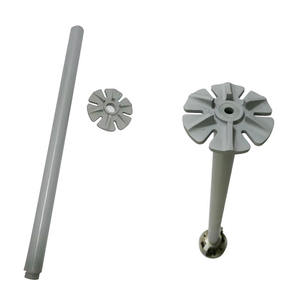
(0.5/ 0.635/ 0.1mm Thickness ALN Ceramic Plate Alumina Nitride Ceramic Substrate)
REQUEST A QUOTE
RELATED PRODUCTS
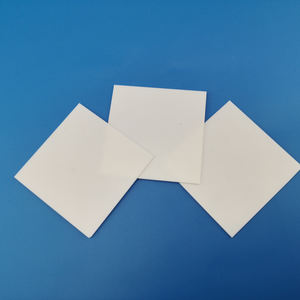
Large Diameter Customized Aluminum Nitride Ceramic Disc
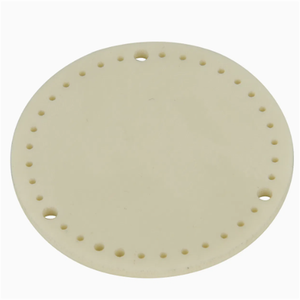
Factory Aln Aluminium Nitride Ceramic Tube
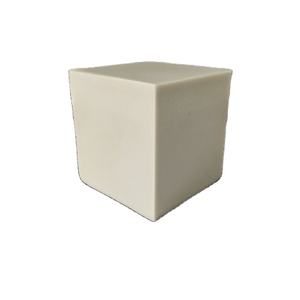
Electrical Insulating Structural Aluminum Nitride Aln Ceramic Plate
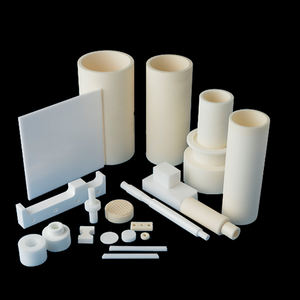
High-Purity Aluminum Nitride (AlN) Powder – 99.9% Purity, Superior Thermal Conductivity
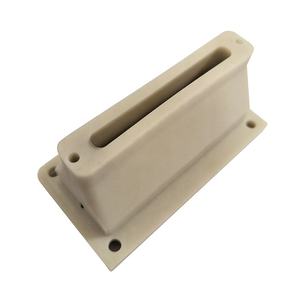
High Thermal Conductivity / Aluminum Nitride / AlN Ceramic Substrate/ Plate / Block
